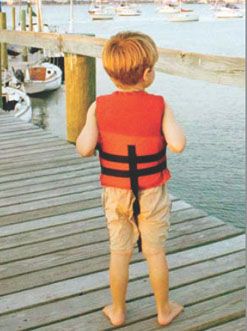One minute my 3-year-old son Ben was standing beside me while I cleated the stern line to our 14-foot ODay Javelin; the next, he was tumbling off the floating dock and into the drink. I didnt hear the splash-only the scream.
Like most parents, I expect to make mistakes; I just hope I wont screw up when it really matters. Had my son not been wearing his life jacket, my failure might have been complete.
When I hauled him out, he was sobbing, frightened, but unharmed. The seriousness of the accident struck home.Bens life jacket is a basic sport-vest, a Type III personal flotation device (PFD) designed for near-coastal use. Far from perfect, it is hot, bulky, and it wont turn an unconscious victim face up. Nonetheless, it floats Ben well and is more comfortable than most Type II PFDs, which have an annoying-yet essential-flotation collar around the back of the head.

In my home state of Florida, children under the age of 6 are required to wear a Coast Guard-approved life jacket while underway on boats under 26 feet. (In federal waters, U.S. law requires children younger than 13 to wear a life jacket while on deck and underway.) Similar laws exist in 44 other states, although details regarding which ages, boats, or activities are regulated can vary greatly.
Maryland recently added a twist to childrens PFD laws by tightening the design requirements. A child 4 years old or younger, boating in Maryland state waters, must wear a life jacket with a high collar/head support (this can be self-inflating), a lifting strap at the back of the neck, and a crotch strap. All of the toddler-infant jackets we tested for this issue had one or more of these features.
You don’t have to look far down the sporting goods aisles of any big retailer to recognize that there are a lot of sub-par kids life jackets floating around. In the WalMart world, splashy graphics seem more im-portant than quality construction, fit, or comfort. Its as if the image of Spider-Man alone is sufficient to keep a child afloat. The National Transportation and Safety Board hopes to soon have mandatory child life jacket laws in all 50 states. While PS strongly believes adults should be allowed to make their own choice to wear or not wear a PFD, child life jacket laws protect the most vulnerable, those too young to measure risk themselves. While we support reasonable mandatory child PFD regulations, the lack of innovation and the mediocre quality in the jackets weve tested are disturbing. So long as this trend persists, advocates of universal PFD usage will be fighting a losing battle-even with Spider-Man on their side.







































